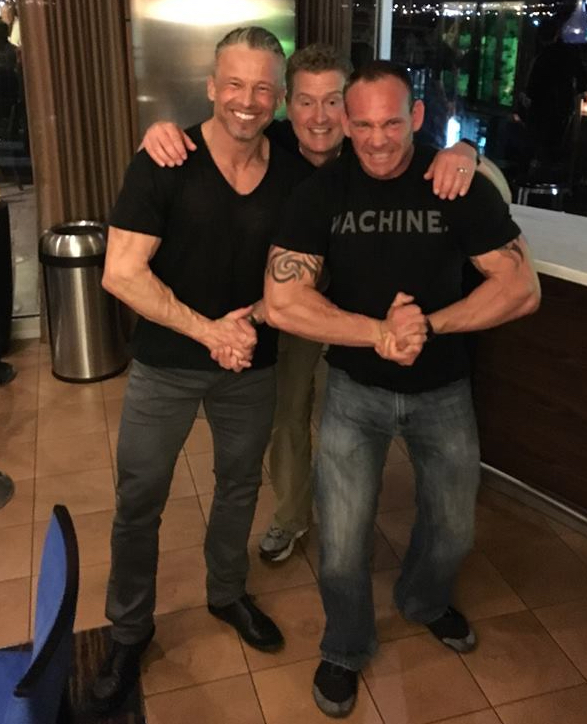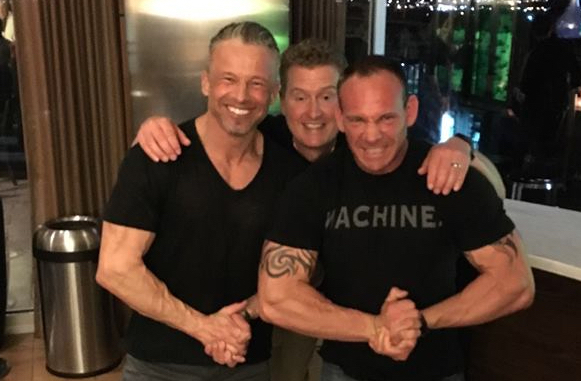You read right.
And it’s no clickbait, no supplement shell-game, not even one weird trick.
Well, maybe one. But it’s not weird. It’s the secret.
A lean, muscular physique is something we associate with youth. So it’s no surprise that a middle-aged person with jacked arms or rippling midsection garners attention.
Young people are kinda “supposed” to be in shape, but older folks? That’s a glitch in the Matrix. They’re not following the script, the one that says on your 40th birthday to trade in your barbells for Doritos and a La-Z-Boy.
Yet some men and women buck this trend. They might get older and grayer but they still keep training, they keep trying, keep fighting.
And they all have one thing in common: they all have extremely strong “why’s.”
Their why drives them to continue to do the grunt work. The tedious tasks required every damn day, from training and eating well to getting enough sleep to simply delaying gratification. Things that seem almost inconsequential at the time (or just a pain in the ass) but when added up over months and years result in big changes. Or at least the occasional backhanded compliment (“you look great for an old guy.”)
However, a superficial “why” that might motivate you at age 20 likely won’t cut it at 40 and beyond.
A young person’s primary motivation is often born out of insecurity that they hope to overcome by being the strongest guy in the gym or to win a Mr. Whatever contest.
But for someone a little further along in their journey on Earth, that kind of rallying cry eventually stops resonating.
You see it a lot in competitive bodybuilding. Many great athletes disappear from the gym completely after their competitive days end because their why never evolved beyond beating others. So when that chapter closes, they short circuit and quit altogether.
So how do you come up with a why that will keep you stoked about exercising and loving the process right through middle age and beyond?
In my experience, a good, lasting why must satisfy four quadrants every single day: your Physical, Emotional, Mental, and Spiritual sides. It’s a framework James Altucher uses in his Daily Practice to live a happy life and it works.
If your reason for getting after it day after day hits all four categories below you’ll never need “motivation” to workout ever again, no matter what stage of life you’re in.

Emotional
This boils down to honesty. A lasting change in your physique requires honesty in your reasons for wanting it. But instead we lie to ourselves and others to protect our feelings or just save face.
I see this all the time when new clients fill out my intake form. They might list “lower my blood pressure and keep up with the kids” as goals, but after speaking on the phone they’ll add wanting bigger arms or to look great in a dress again. I’ve found that those who “come clean” have far better compliance (especially when the process becomes a grind) and as a result, better outcomes. But it all starts with simple honesty.
Mental
The health and fitness industry is a quagmire of marketing hype, pseudoscience, and useless information passing for knowledge. The wide-open nature of the internet combined with a lack of context is the big culprit, leading to a whole generation of people confusing acquiring “facts” for taking action (i.e., analysis-paralysis).
It can also lead to massive burnout. Many will approach getting fit with the best intentions only to be spun around and spit out by an overwhelming firehose of trivia and horseshit.
Here’s the thing: even though I design some very good workout programs, I’ll be the first to admit that you’ll make more progress doing a sorta lousy program with focused effort than you would plodding through a Very Good Program, nitpicking the minutiae in search of The Perfect Program.
Overwhelm is real. My rule is, when the information overload becomes too much to bear, stop thinking and start acting. Act with purpose and focus and imperfect tenacity. Exercise may benefit the mind and soul but it’s still a physical expression. Most people have enough knowledge to get 80% of the way to their goal. They just need to stop thinking and start doing.
Spiritual
Understanding and embracing the spiritual side of getting in shape rejuvenated my career and greatly improved my own training.
Spirituality isn’t about religion or God or even prayer. It’s about seeing your actions, even something as superficial as getting in shape, as contributing to something bigger than yourself. This is the missing link in most why’s, and addressing it will help make “you” a priority, even as you grow as a person and looking yoked in a tank-top becomes less important.
The key step is to operate from a place of gratitude. Gratitude has been completely bastardized on social media (go figure), with hyper-filtered Instagram models blathering about how grateful they are for living a “fitness lifestyle” (enter discount code DOUCHEBAG for 5% off custom macro diets).
But expressing gratitude without some kind of action is bragging. You need to give back, not just say thanks.
As a coach I have the privilege to help people every day. But even that’s not always enough. Much of my day is addressing what are basically First World Problems, such as stripping body fat or adding extra quad sweep, so I’ve admittedly battled bouts of “is this all there is to my life?” existential pathos.
For me, leaving my world COMPLETELY has helped immensely. It not only gives me the space to appreciate my comfortable meathead existence but also see first hand how lucky I am to be a part of it. It’s impossible to have a bad day or even a bad workout when you realize how many people would give anything to trade places with you and your “problems.”
But you don’t have to go halfway around the world to make a difference. Volunteer. Mentor someone. Offer to workout with a co-worker. You have no idea how much helping someone else start their journey will improve your own.
Physical
Okay, this is the easy part. I get asked a lot about over 40 training and to be frank, much of what you read is contextual at best, and bullshit at worse. But that’s a whole other blog entirely (my next one). Still, many people fail to stick to a fitness routine simply because their training doesn’t match their goals or stage in life.
Here are just a few key things to consider.
• Never, ever train through pain. Avoiding injury is the most effective rehab.
• Train the muscles, not the movements.
• Pursue consistency more than intensity.
• If you’re not sure what an exercise is working then stop doing it.
• When in doubt, simplify.
• Look for different measures of progress, not just the scale or weight lifted.
• Manage stress before it manages the shit out of you.
• Further to the above, lifestyle is key. Time spent sleeping and laughing is time well spent.
• Manage expectations. Push yourself and demand more, but also learn to accept the things you cannot change. That’s maturity.
• Give things time to work. You have your whole life to work on it.
To look “great for your age” or earn the nickname “Jacked Old Guy” isn’t something you can acquire overnight. You earn it over years of consistent focus on the daily process, through ups and downs and injuries and setbacks, and above all through each passing phase in life.
Of course, it’s hard to be so in tune to your why every day. But you don’t have to be perfect. Just try and above all, believe.
I know it’s worked for me. Cause I’m still here.

